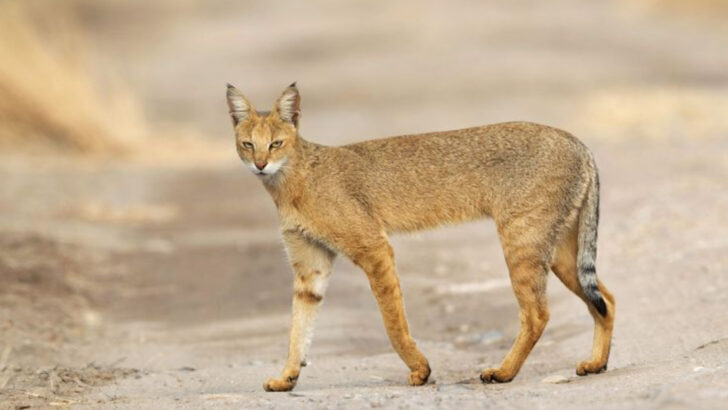Cats may purr like royalty, but beneath that soft fur and graceful gaze, a wild predator lurks.
Some cats, despite their refined appearances, carry the untamed essence of their ancestors—ready to pounce, stalk, and conquer. These feline companions blend elegance with primal instincts, a perfect balance between domesticated charm and wild spirit.
From the fierce Bengal, with its striking coat that echoes the jungle, to the sleek Savannah, whose eyes seem to hold the secrets of the wild, these cats remind us of the raw power hidden in their DNA.
Join us as we explore 19 cat breeds that look gentle but possess the captivating instincts of their wild ancestors. Get ready to meet the perfect mix of beauty and beast!
Bengal
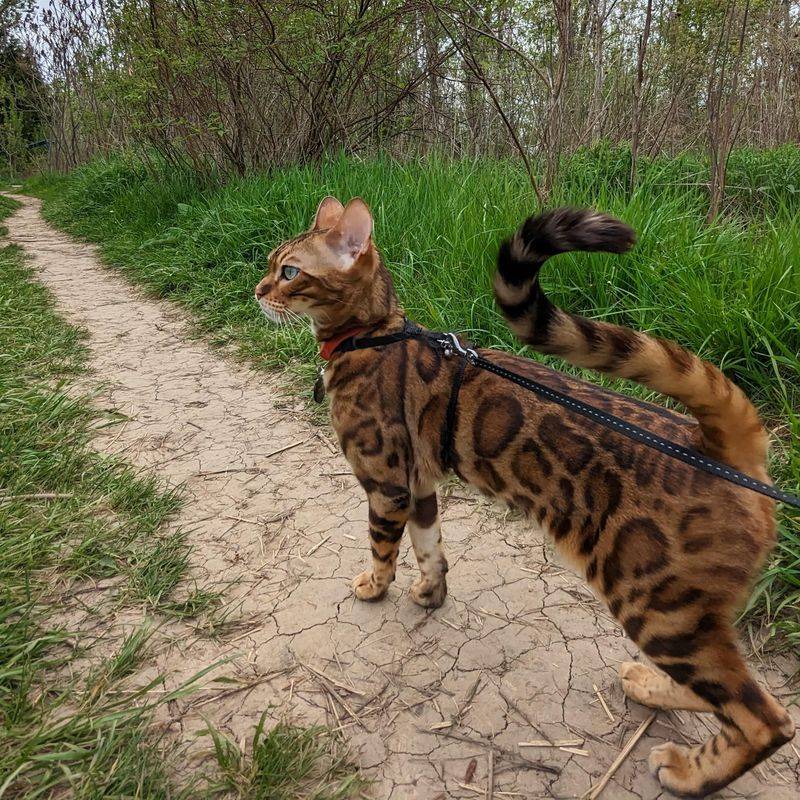
The Bengal cat, with its sleek and spotted coat, is a modern domestic breed that resembles the wild Asian leopard cat. Its striking appearance is matched by a lively personality.
Bengals are known for their energetic behavior and love of play. They often display a fondness for climbing and exploring, traits inherited from their wild ancestors.
Bengals are surprisingly affectionate, often forming strong bonds with their humans. However, their wild side can emerge during playtime, making them perfect for those who appreciate a cat with a bit of the wild spirit.
Savannah
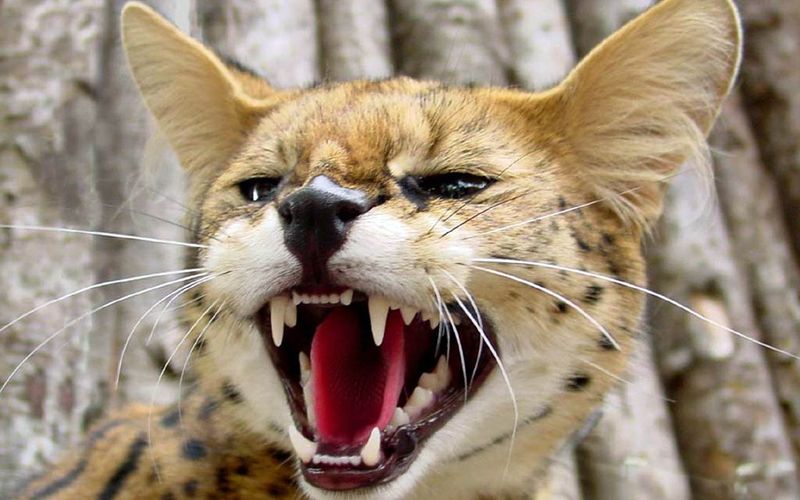
The Savannah cat’s tall, lean body and distinctive spotted coat make it resemble a miniature cheetah. This exotic breed is a cross between a domestic cat and a serval, an African wildcat.
Savannahs are renowned for their adventurous nature and high energy levels. They love to jump, climb, and even play fetch, often acting more like a dog than a cat.
Their loyalty and curiosity make them engaging companions, but their wild ancestry means they require plenty of mental and physical stimulation. Savannahs are not just pets; they’re wild-hearted friends.
Chausie
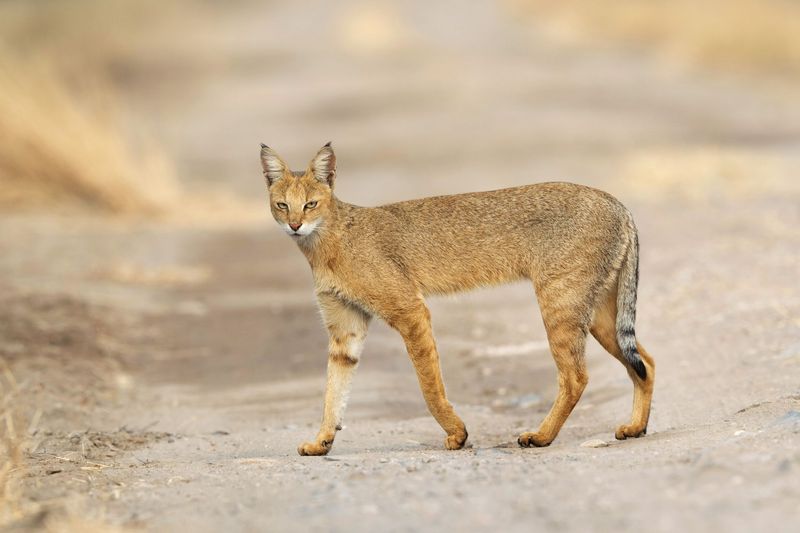
The Chausie, a striking cat breed, combines the elegance of a domestic feline with the boldness of the jungle. This breed originated from the jungle cat of Egypt and has a wonderful blend of wild and domestic traits.
Chausies are highly intelligent and social, often seeking interaction with their human companions. They thrive on activity and exploration, requiring a stimulating environment to keep their inquisitive minds engaged.
With their muscular build and tufted ears, Chausies are a living testament to the wild lurking within domestic walls.
Egyptian Mau
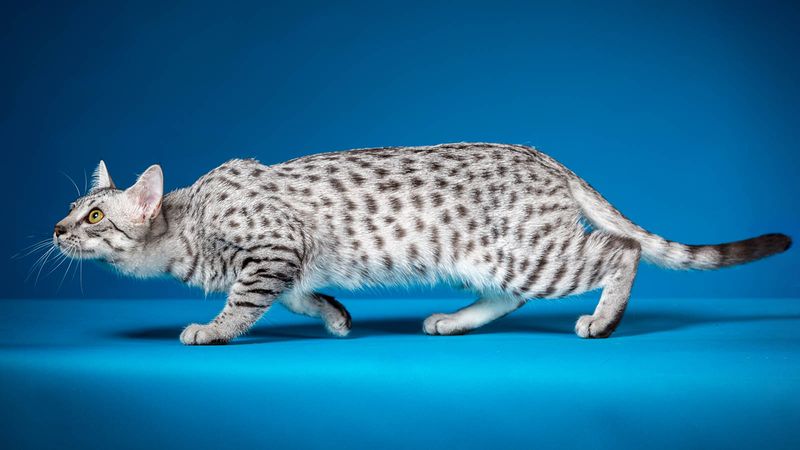
The Egyptian Mau captivates with its naturally spotted coat and vivid green eyes. This breed holds the title of the fastest domestic cat, capable of reaching speeds up to 30 mph.
Known for its playful yet reserved demeanor, the Mau has a fascinating history that dates back to ancient Egypt. Its sleek body and powerful legs hint at its predatory instincts.
While they may seem aloof at times, Egyptian Maus are affectionate towards their families, often choosing a favorite person to shadow around the house. Their regal presence is truly enchanting.
Ocicat
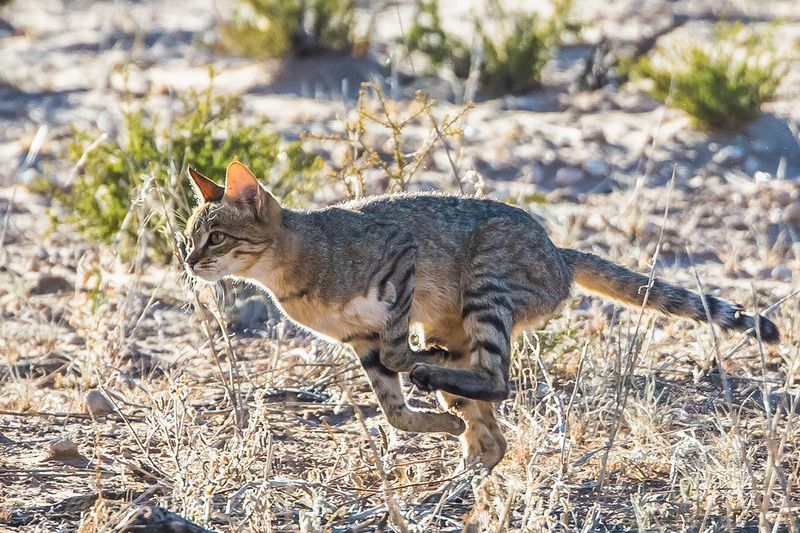
The Ocicat’s spotted coat and athletic build might lead you to believe it’s a wild cat, but it’s all domestic. Unlike its name suggests, the Ocicat has no wild DNA; it was bred from Abyssinians, Siamese, and American Shorthairs.
This breed is known for its robust physicality and boundless energy. Ocicats are exceedingly social, often enjoying the company of people and even other pets.
Their confidence and curiosity can be captivating, making them a delightful addition to any household that embraces their vivacious spirit.
Toyger
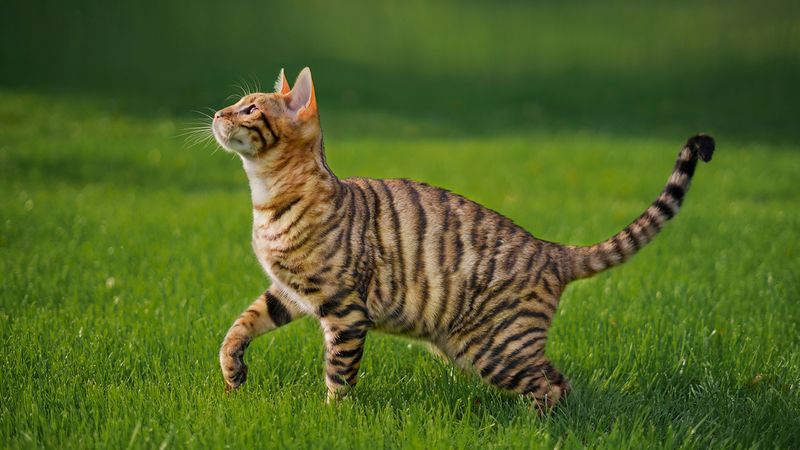
The Toyger is designed to resemble a miniature tiger, complete with distinctive striped fur and a muscular build. This breed is a testament to human creativity in cat breeding, aiming to capture the essence of the wild tiger while maintaining a domestic temperament.
Toygers are playful, intelligent, and sociable, often seeking out interaction with their families. Their striking appearance draws admiration, but it’s their warm, friendly nature that wins hearts.
Perfect for those who want a dash of the jungle in their living room, Toygers are truly unique.
Serengeti

The Serengeti cat, with its long legs and large ears, is bred to resemble a serval. This breed combines the beauty of the wild with the temperament of a domestic cat.
Serengetis are known for their lively personalities and love of adventure. They enjoy exploring their surroundings and often form strong bonds with their families. Despite their wild appearance, Serengetis are affectionate and enjoy human company.
They thrive in environments where they can climb, jump, and engage their agile bodies. This breed is a testament to the allure of the wild.
Cheetoh
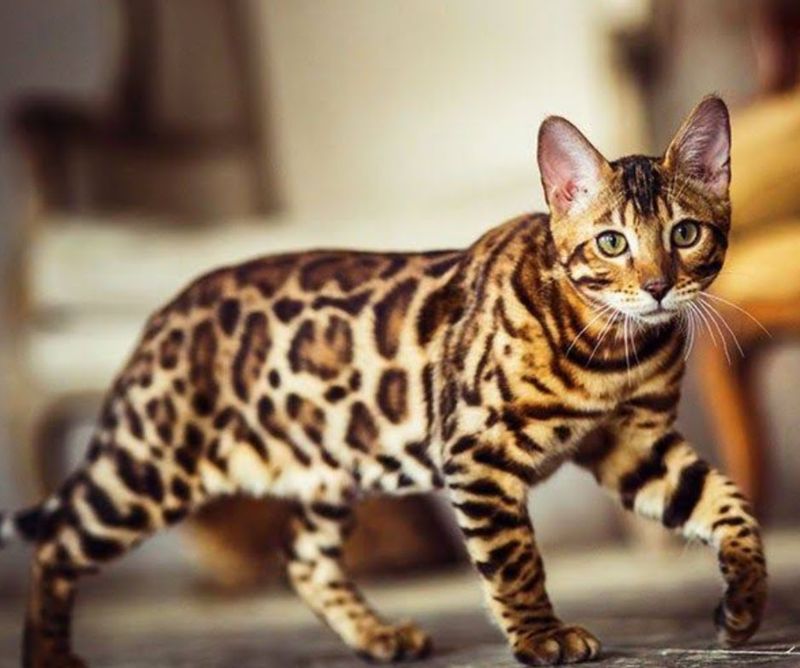
The Cheetoh cat is the result of crossing a Bengal and an Ocicat, producing a breed that looks strikingly wild. With their leopard-like spots and sleek build, Cheetohs are a visual delight.
These cats are known for their friendly and outgoing nature, often enjoying the company of humans and other pets. Despite their wild appearance, Cheetohs are gentle and affectionate, making them excellent companions.
Their playful disposition and love of exploration make them a joy to have around, adding a touch of the exotic to everyday life.
Pixie-Bob
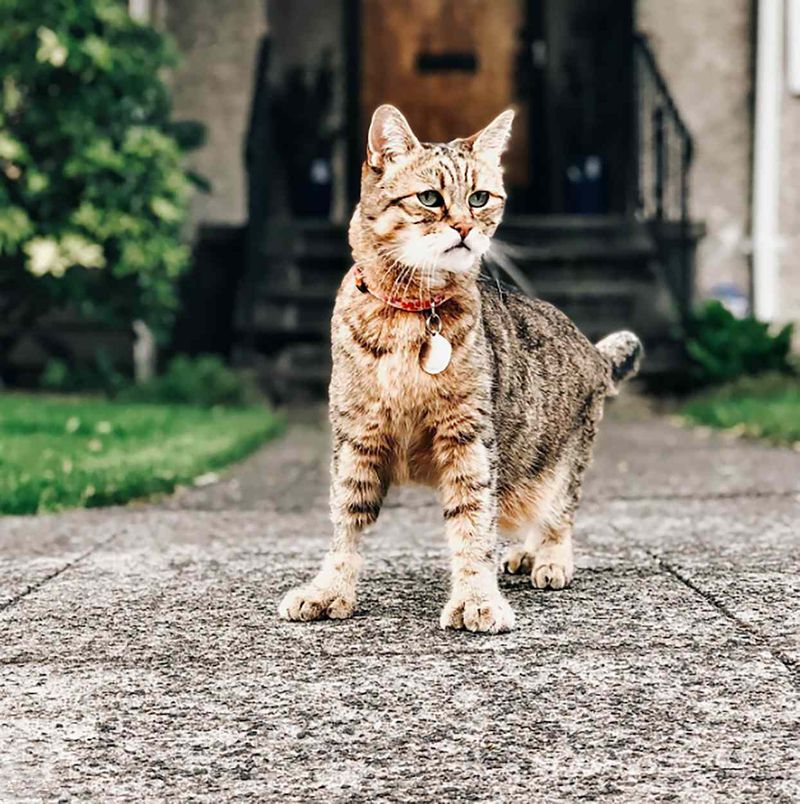
The Pixie-Bob’s wild look is reminiscent of a bobcat, with tufted ears and a short, bobbed tail. This breed is unique for its polydactyl paws, often having more toes than the average cat.
Pixie-Bobs are known for their laid-back demeanor and loving nature. They form strong bonds with their families and are often described as dog-like in their loyalty.
Despite their wild appearance, Pixie-Bobs are gentle and enjoy a good cuddle. Their unique blend of traits makes them an intriguing addition to any home.
Caracat
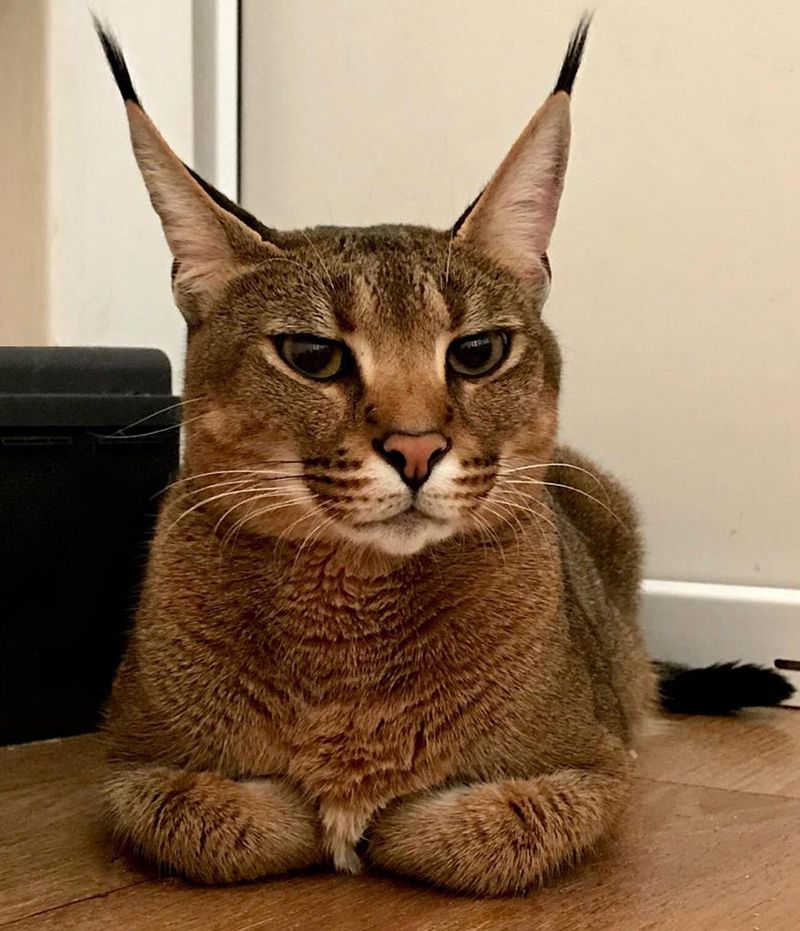
The Caracat is a rare hybrid, a cross between a Caracal and a domestic cat, showcasing a stunning appearance with tufted ears and a sleek build. This exotic breed is known for its playful and adventurous nature.
Caracats are intelligent and curious, often engaging in playful antics that reveal their wild side. Despite their striking appearance, they form strong bonds with their families, enjoying companionship and affection.
While not for everyone, Caracats are perfect for those seeking a cat with a touch of the wild and a love for adventure.
Asian Leopard Cat
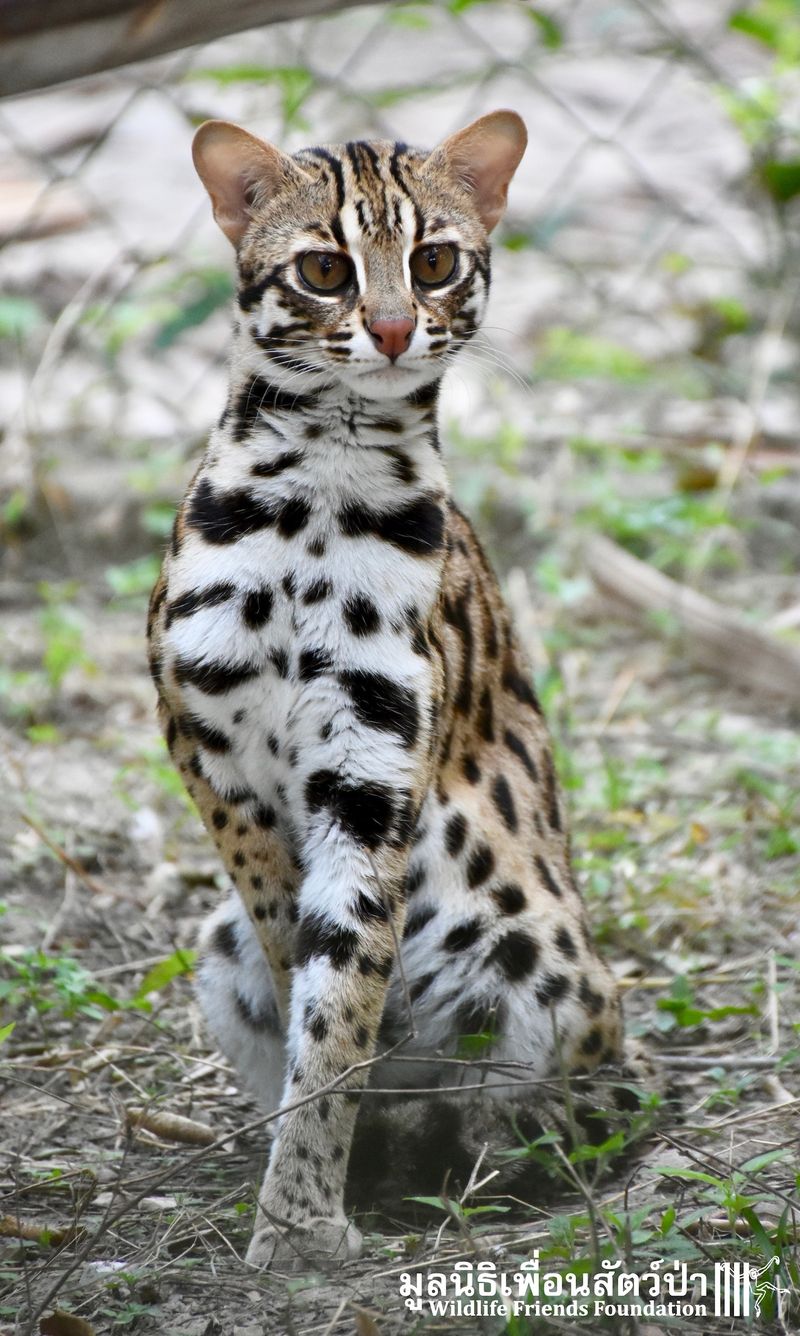
The Asian Leopard Cat is a wild cat species native to Asia, not a domestic breed but often part of hybrid breeding programs, like those that created the Bengal.
This small wildcat thrives in a variety of environments, from forests to grasslands. Its distinctive spots and lithe movements make it a master of stealth.
Although not suitable as a pet, the Asian Leopard Cat’s genetics have contributed to some of the most striking domestic breeds. Observing them in their natural habitat is a reminder of the wild essence in many domestic cats.
Abyssinian
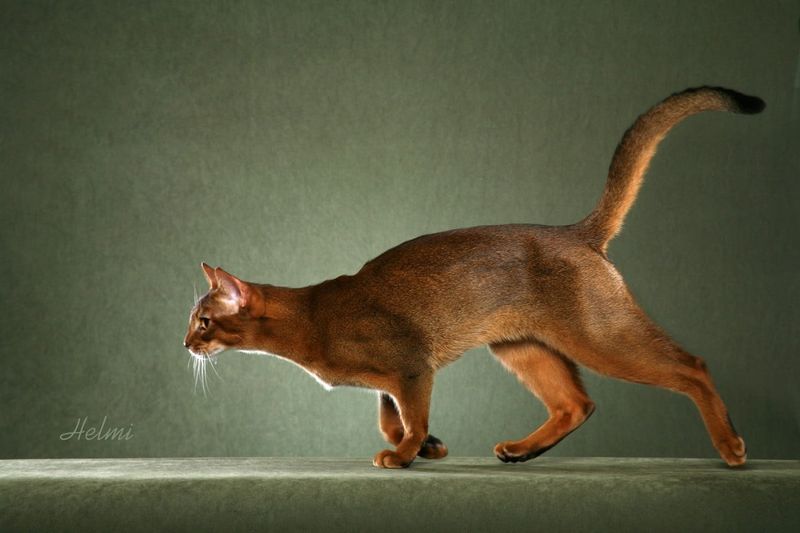
The Abyssinian is one of the oldest known domestic cat breeds, with a history as regal as its appearance. Known for their ticked coats that shimmer with a ruddy glow, Abyssinians are incredibly active and playful.
Their curious nature leads them to explore every nook and cranny of their home. This breed’s lively spirit is a joy to behold, and their affectionate nature makes them excellent companions.
Abyssinians love engaging with their families and often enjoy interactive play that hints at their wild ancestry. They’re a delight to live with.
Sokoke
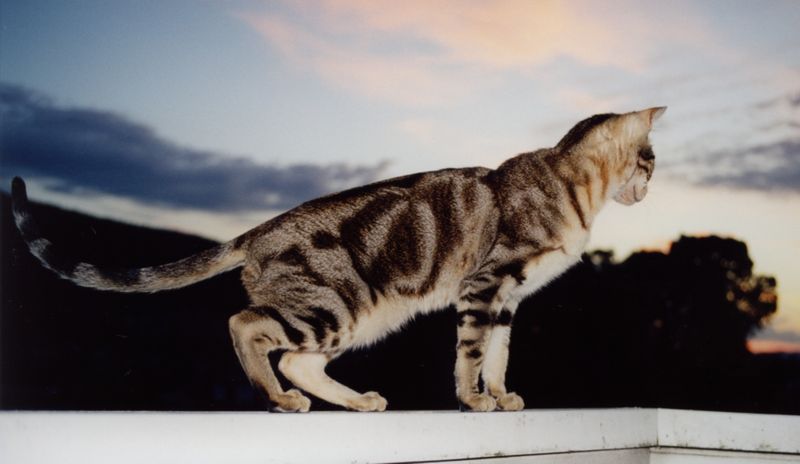
The Sokoke is a rare breed with a striking marbled coat that evokes the image of tree bark, blending seamlessly with its forest origins. Native to the Sokoke Forest in Kenya, this cat is known for its agility and intelligence.
Sokokes are active and enjoy climbing and exploring their surroundings. They form strong bonds with their human companions and are known for their playful yet independent nature.
This breed’s unique appearance and energetic personality make it a fascinating addition to any household, embodying the spirit of the wild.
Norwegian Forest Cat

The Norwegian Forest Cat, with its thick, water-repellent fur and bushy tail, is perfectly adapted to survive harsh climates. This breed’s history is steeped in Norse mythology, often linked to the goddess Freyja.
Their sturdy build and tufted ears give them a wild appearance, but their temperament is gentle and friendly. Norwegian Forest Cats are known for their playful and independent nature, often enjoying climbing and exploring.
Despite their wild looks, they form deep bonds with their families, offering a blend of rugged beauty and warmth.
Siberian
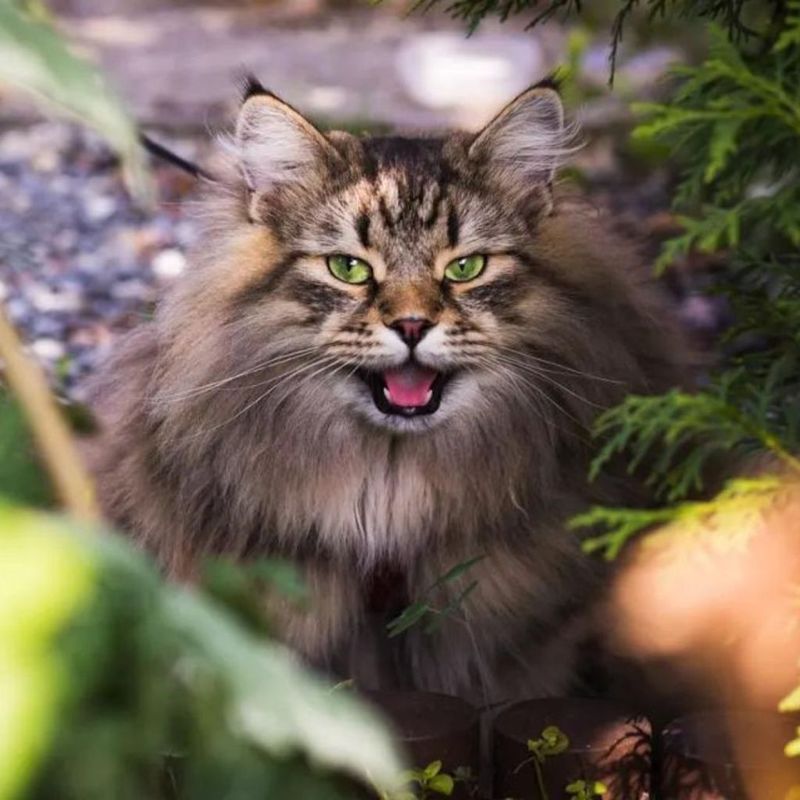
The Siberian, Russia’s national cat, boasts a thick, water-repellent coat that protects it from the harsh Siberian winters. This breed combines strength and agility with a gentle, affectionate personality.
Siberians are known for their playful and intelligent nature, often partaking in problem-solving games and interactive play. Their wild appearance, with tufted ears and a luxurious coat, belies their sweet temperament.
Siberians form strong bonds with their families, offering both companionship and a touch of the exotic, making them a popular choice for cat enthusiasts.
Canadian Lynx
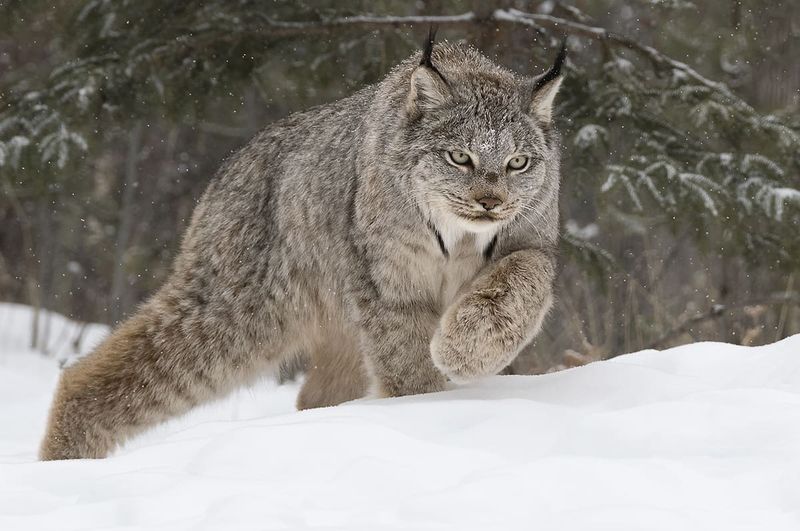
The Canadian Lynx, a wild feline native to North America, is known for its tufted ears and dense, insulating fur. This wild cat thrives in cold, forested regions and is a masterful hunter, primarily preying on snowshoe hares.
While not a domestic breed, its distinctive features and solitary nature have inspired admiration and respect. The Canadian Lynx’s elusive behavior and striking appearance serve as a reminder of the wild cats that share our world, influencing the domestic breeds we cherish today.
Turkish Van
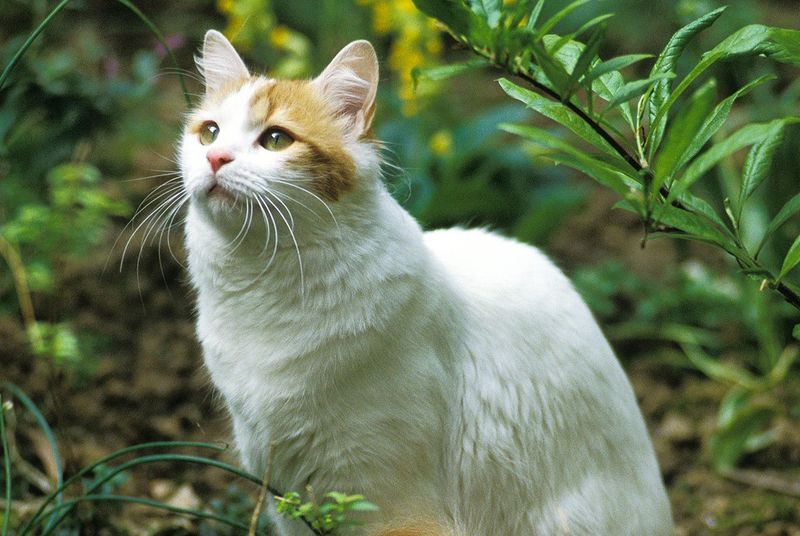
The Turkish Van, famed for its love of water, boasts a semi-longhaired coat that’s both beautiful and practical for swimming. Hailing from the region around Lake Van in Turkey, this breed is known for its playful and energetic disposition.
Turkish Vans are incredibly agile and enjoy engaging in water play, a trait rare among domestic cats. Their striking appearance, often with a unique color pattern on the head and tail, adds to their charm.
Despite their lively nature, they are affectionate and form deep bonds with their families.
Bobcat
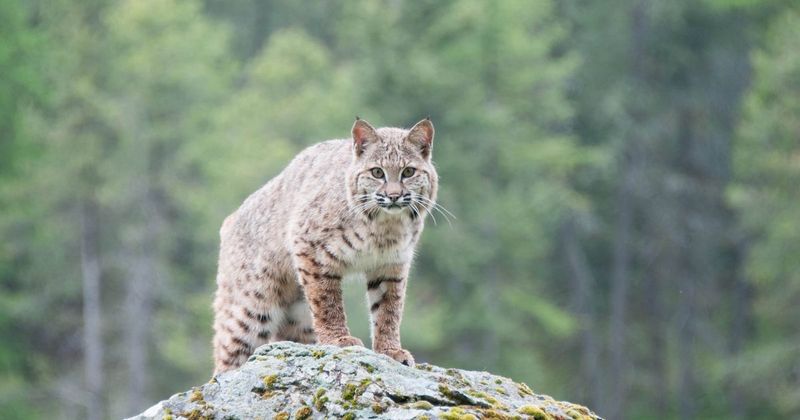
The Bobcat is a wild feline species native to North America, recognized by its short tail and tufted ears. As a solitary and adaptable predator, it thrives in a variety of habitats, from forests to deserts.
Bobcats are agile hunters, with sharp instincts that make them effective in capturing prey. While not a domestic breed, the Bobcat’s appearance and behaviors have inspired many hybrid breeding programs.
Observing a Bobcat in the wild offers a glimpse into the untamed world, reflecting the wild essence found in many domestic cats.
The Rare Andean Mountain Cat
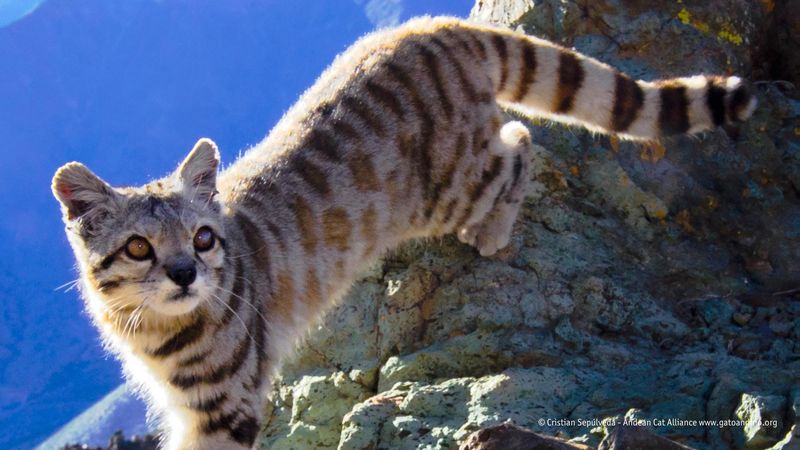
High in the Andes, a ghostly figure prowls the rugged terrain—the Andean Mountain cat. Its striking grayish fur and bushy tail make it a sight to behold, yet it’s one of the rarest wild cats in the world.
Living at altitudes of up to 4,000 meters, this cat is a master of stealth and survival, preying on small mammals and birds. Its rarity and beauty have made it a symbol of the Andean wilderness.
Interesting bit: Despite its elusive nature, the Andean Mountain cat has been part of local folklore, often seen as a guardian of the mountains.

